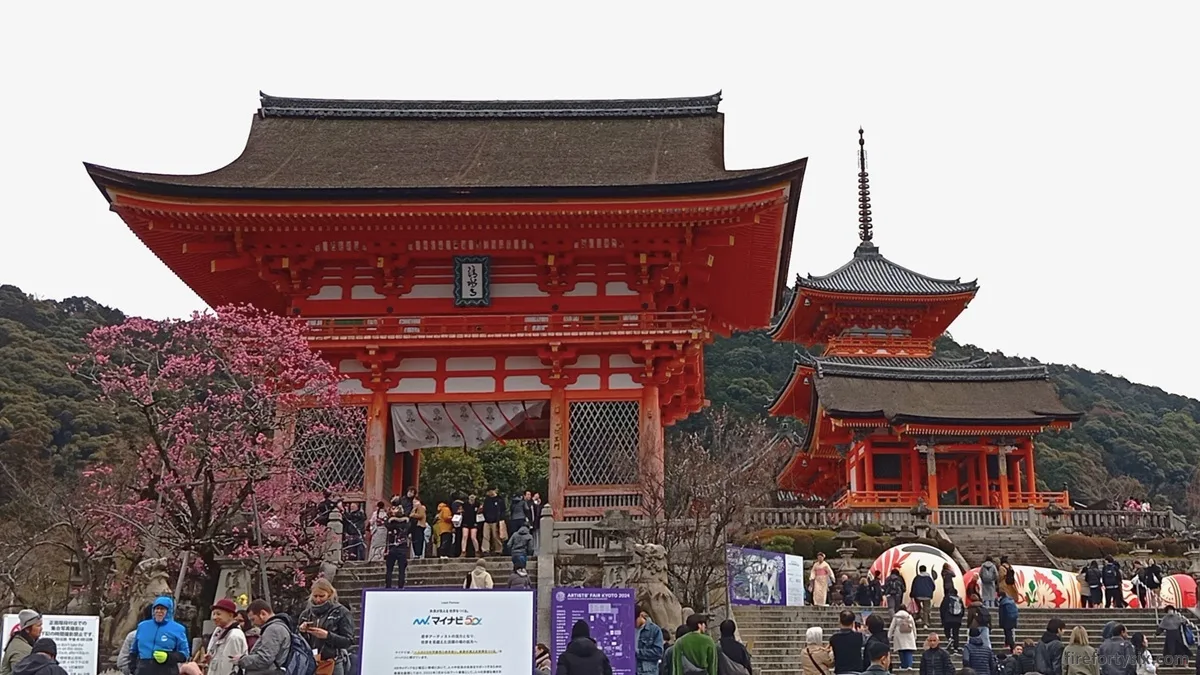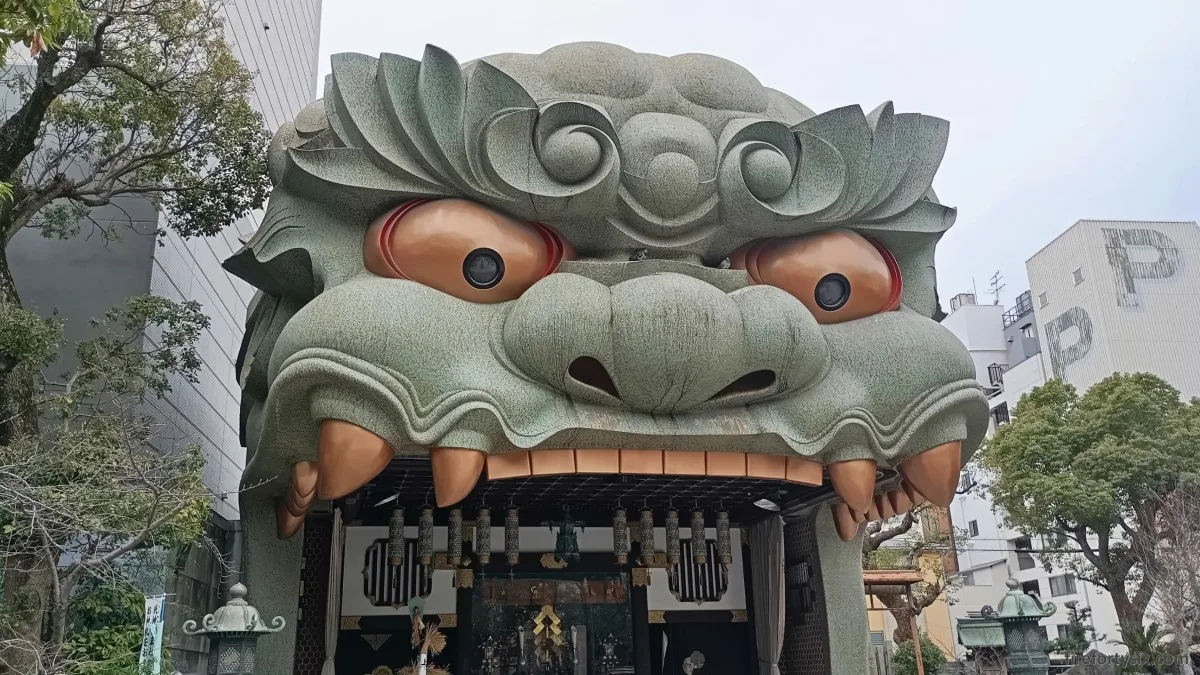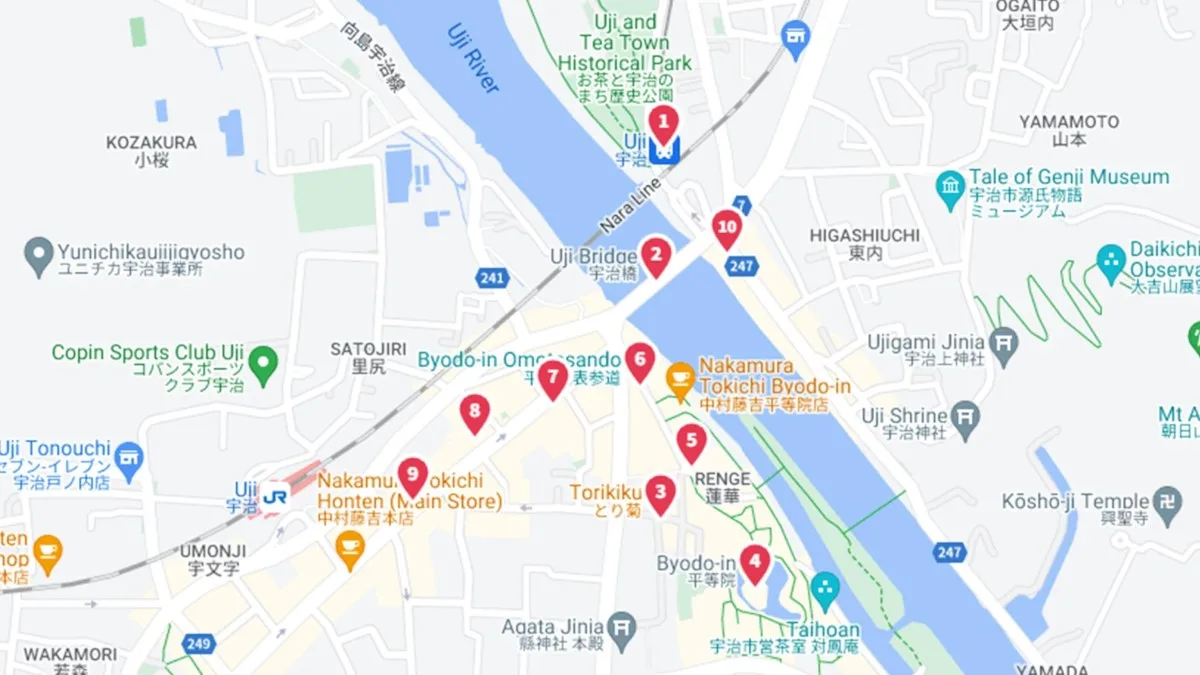Kyoto is known for kaiseki ryori (会席料理), an elaborate multi-course meal prepared with traditional techniques using seasonal ingredients.
And when it comes to ingredients, tofu is probably Kyoto’s most famous produce. It may seem humble but centuries, no, millennia, of refinement have elevated it to a delicacy.
So what do you get when you combine the two together in a tofu kaiseki? Well, there was only one way to find out.
Higashiyama is one of the most picturesque wards in Kyoto, home to zen scenery and ancient Japanese temples and shrines.
It’s also where the Philosopher’s Path is located, and Rengetsujaya (蓮月茶や) just happened to be near the walking route that I had mapped out to get there.

The restaurant’s full Japanese name is actually 豆富料理 蓮月茶や, or Tofu Cuisine Rengetsujaya, leaving no doubt as to what they specialise in.
It sounded like a great place for us to experience an authentic tofu kaiseki. Especially given its high ratings in both Google (4.3⭐/5.0 | 159 reviews) and Tabelog (3.43⭐/5.00 | 117 reviews).
Their menu was prominently displayed at the entrance, elegantly handwritten in both hiragana and kanji and mounted on a wooden frame.


There’s no doubt that Kyoto is currently over-touristed, with overseas visitors, like ourselves, taking advantage of the weak Japanese yen.
Some establishments don’t take too kindly to the incoming horde, while others lean into it and embrace the business opportunity. Rengetsujaya clearly belongs to the latter category.
As demonstrated by translated menus in both English and Chinese and its advertised acceptance of Alipay and WeChat Pay, e-payment wallets popular in China.
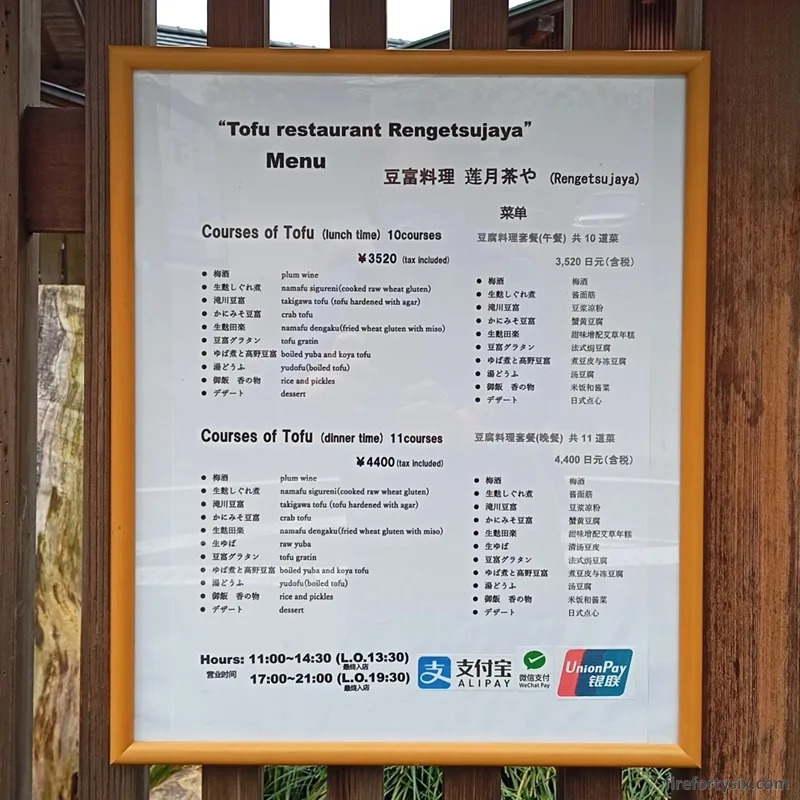
As we walked through the main entrance and into the beautiful courtyard, we were surprised that there were no other customers in sight.
We hadn’t made a reservation, and the absence of a queue raised our hopes of securing seats for their lunch service.


A young kimono-clad waitress greeted us politely and proceeded to ask us a question in Japanese. When we responded with looks of puzzlement, she appeared somewhat flustered.
Google Translate came to the rescue, and helped to bridge the language barrier.

“Sumimasen,” I replied, and followed it up with an “X” sign using my index fingers.
She made a motion for us to wait, and shuffled back into the restaurant. I was starting to feel slightly concerned, because even though the place was empty, there was a chance that it was fully booked.
Thankfully, our waitress returned, flashed a demure smile and beckoned us to follow. We were led towards an inner room, asked to remove our shoes and were seated on a tatami floor.
Our window seats faced the quiet road outside, with a lone bonsai plant standing stoically on the ledge. The minimal decoration fit in nicely with the elegant ambience of the room.
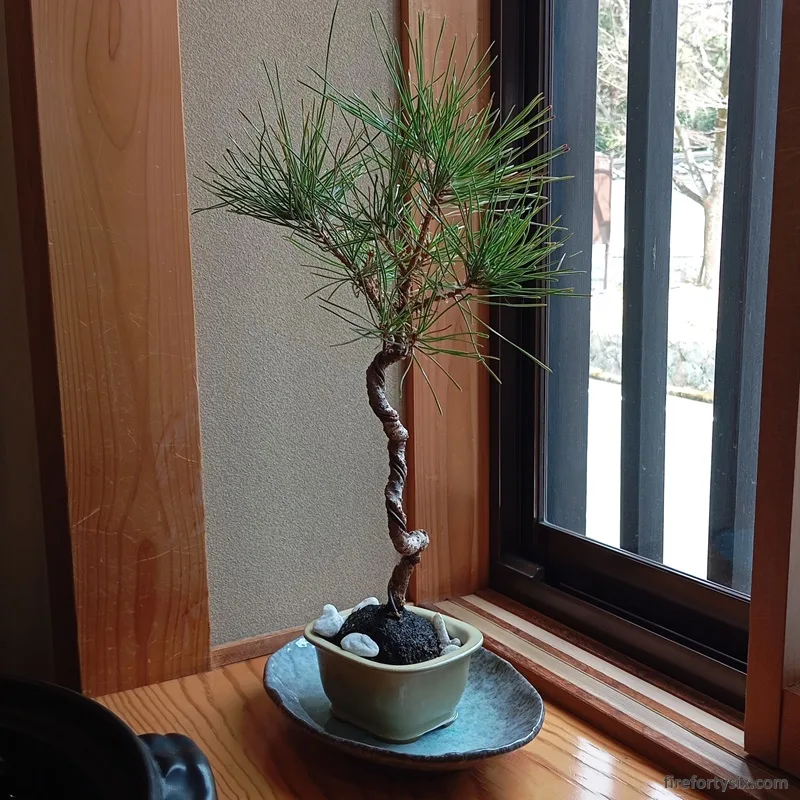
On the table was a donabe on an electric heater, English versions of the menu and a lacquerware tray with our appetisers and various condiments.
The 10 course lunch menu (¥3,520 incl. tax) comprised:
- Plum Wine
- Namafu Sigureni
- Takigawa Tofu
- Crab Tofu
- Namafu Dengaku
- Tofu Gratin
- Boiled Yuba & Koya Tofu
- Yudofu
- Rice & Pickles
- Dessert
Since I’m not a fan of umeshu, I ordered a nama biru instead. It was somewhat disappointing that soya bean milk wasn’t available, being a tofu specialty shop and all, but you can never go wrong with Japanese draft beer.
When our drinks arrived, we started on the appetiser trio.
The Namafu Sigureni (cooked wheat gluten) was salty but paired well with our cold beverages. I felt that it would also have been a perfect accompaniment to plain white porridge.
Takigawa Tofu (agar-hardened tofu) was served in long wavy strips and had an interesting bouncy bite. Coupled with the light ponzu/goma dressing, it tasted like the complete opposite of the sigureni, in terms of both taste and texture.


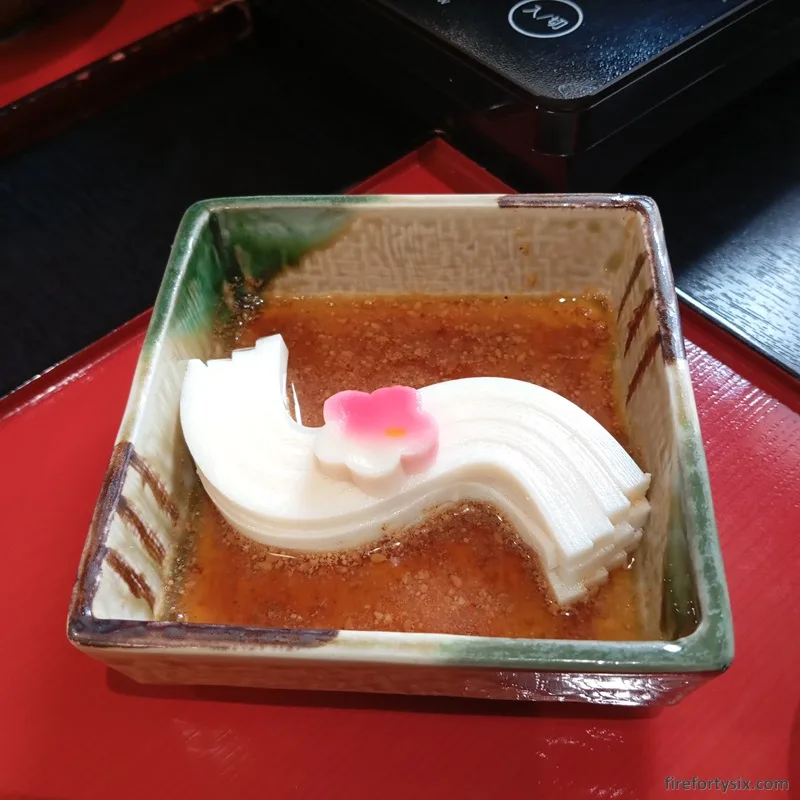

A dollop of freshly-grated wasabi was placed on the Crab Tofu. It wasn’t just for decoration, because the crab tofu tasted 90% crab and 10% tofu.
The small rectangular slab looked plain and innocent, but its flavour was anything but.
Generous amounts of crab roe must have been used, because its taste permeated every bite. Being longtime fans of the crusty crustacean, it was a welcome addition.
Namafu Dengaku was next, and two pieces of deep-fried wheat gluten came topped with two different types of miso.
The one slathered with red miso was umami-laden and very savoury, while the version with white miso looked and tasted surprisingly like a banana fritter. I would have been fooled if I had tasted it blind, a la Culinary Class Wars.

Our room had three other tables and they were all filled by the time we finished the fifth course. Our other dining companions were all elegantly-dressed ladies, speaking in hushed tones throughout the meal.
I suppose was the odd one out, except for the fact that I’m currently a proud holder of the UOB Lady’s Card. Their marketing tagline used to be “The men don’t get it”, but they’ve since quietly changed tack.
After a short pause, our Tofu Gratin arrived. At first glance, it appeared rich and heavy. But after a few spoonfuls, we found it exceptionally soft and light tasting, while still preserving its creaminess.
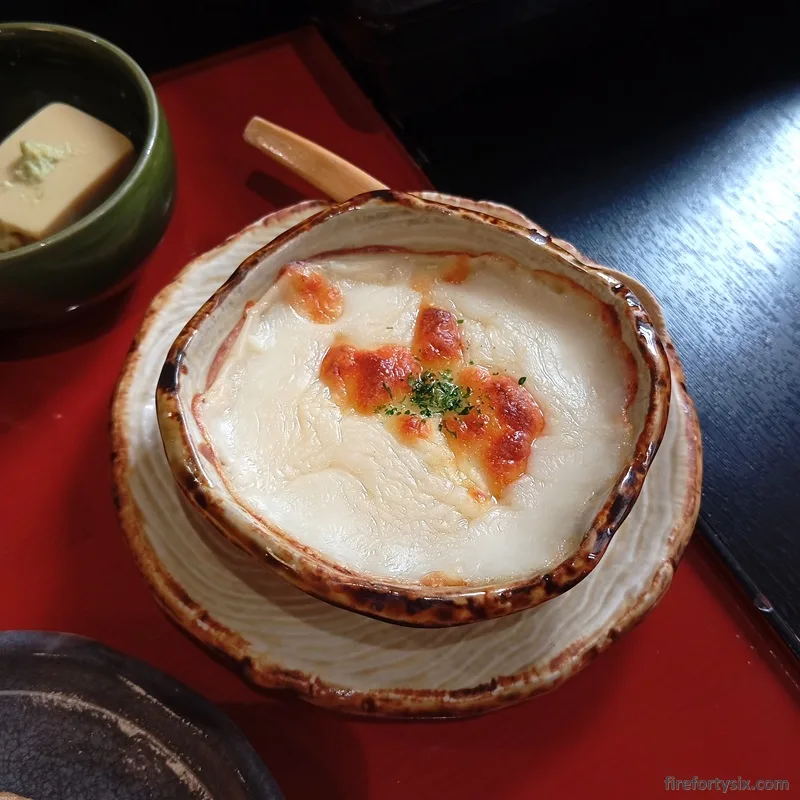

The next course of Boiled Yuba & Koya Tofu had an even lighter touch. Spongy tofu and firm beancurd skin were boiled in a delicate dashi, and served together with some greens.
Even though the spongy koya tofu was a great vehicle to soak up the delicious broth, I wasn’t enamoured with its squishy texture. The boiled yuba though, was a totally different matter.
One of my favourite tofu dishes of all time is a simple nama yuba. While this boiled version wasn’t as soft or silky, it had a delightful chewiness and tasted just as good.

Finally, it was time to unveil the Yudofu.
It had been slowly simmering away in the donabe for a while now, and our waitress lifted the cover once it had reached the right level of doneness.

My first piece was placed in a small dish containing tsuyu and topped with katsuoboshi, negi and leaves of mizuna.
The saltiness from the sauce, smokiness from the bonito flakes and bitterness from the greens paired perfectly with the yudofu. It was gone in 60 seconds.
I had my second piece “naked”, so to speak, in order to savour the unadorned and unaltered flavour of made-in-Kyoto specialty tofu.


Its texture was like a very good tau huay, a popular dessert in Singapore, and its taste was the very essence of soya bean. Simple and unadulterated, it was the purest expression of tofu I’ve ever had.
Both ways of eating it were delightful, and I was hard pressed to decide which was better. The Wife agreed, and we both decided to call it a tie. Either way, it was hands-down the best dish of the meal.
When the next course of rice and pickles was served, we knew that we were nearing the end of our tofu kaiseki. It was good, but wasn’t particularly memorable.

Dessert came in the form of a kawaii little sakuramochi, with pink-coloured rice wrapped in — what else — a pickled sakura leaf.
Inside was a sweet red bean filling, and it provided a whimsical end to a wonderful lunch.
To be honest, I’m not particularly fond of sakuramochi. But even I had to admit that it was the perfect choice of sweet to mark the start of the sakura season.

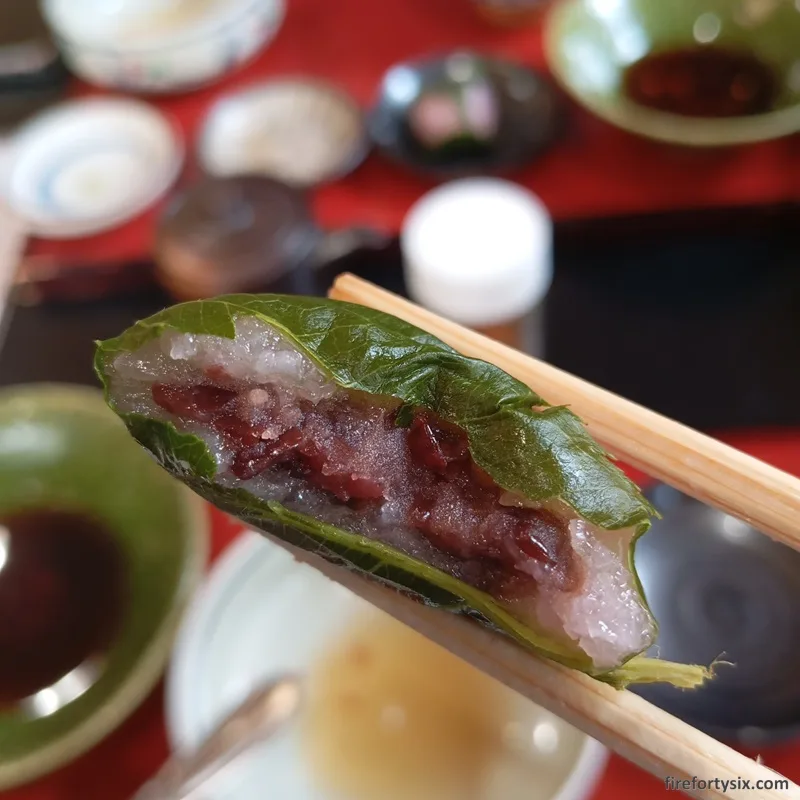
Throughout the course of our entire meal, we were filled with a sense of inner calm. We could feel time slowly passing by and it all felt very zen and very serene.
It was one of the most elegant meals we’ve ever had, and one that we highly recommend for those who enjoy tofu in all its forms.







